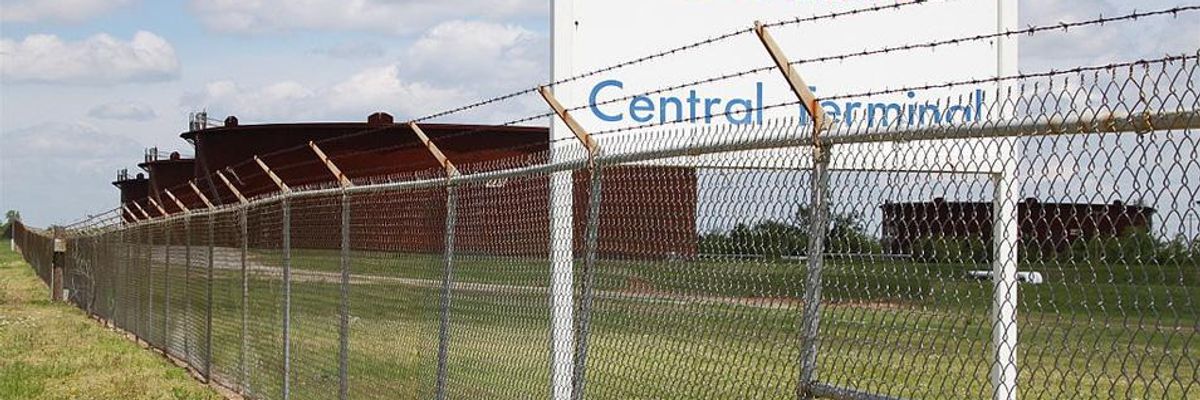In a recent quarter two call for investors, Enbridge Inc executives said the company's "Keystone XL" clone -- the combination of the Flanagan South and Seaway Twin pipelines -- will open for business by October.
As previously reported by DeSmogBlog, Enbridge has committed a "silent coup" of sorts, ushering in its own Alberta to Port Arthur, Texas pipeline system "clone" of TransCanada's Keystone XL tar sands pipeline. Unlike Keystone XL's northern leg, however, Enbridge has done so with little debate.
With the combination of the Alberta Clipper (now called Line 67, currently up for expansion), Flanagan South and Seaway Twin pipelines, Enbridge will soon do what TransCanada has done via its Keystone Pipeline System.
That is, bring Alberta's tar sands to Gulf of Mexico refineries and send it off to the global export market.
According to Guy Jarvis, president of liquids pipelines for Enbridge, even though the Cushing, Oklahoma to Port Arthur, Texas Seaway Twin is technically operational, it will not become functional until Flanagan South opens in October.
"The base plan had been, and still is, to do the line fill of the Seaway Twin from Flanagan South. So we don't expect to see too much off the Seaway Twin until Flanagan South does go into service," Jarvis said on the investor call.
"It does have the capability to be line filled at Cushing if the barrels are available and the market signals would suggest that you would want to do that. But at this point in time, we think it will be the base plan that it is filled on from Flanagan South."
Beyond piping diluted bitumen ("dilbit") to market, Enbridge also has plans to market dilbit via rail in a big way.
All Aboard Enbridge's Tar Sands-By-Rail
Jarvis unpacked his company's plans to help move tar sands by rail during the call, as well.
"In terms of the rail facility, one of the things we're looking at is - and the rail facility is really in relation to the situation in western Canada where there is growing crude oil volumes and not enough pipeline capacity to get it out of Alberta for a two or three year period," he said.
"So, one of the things we're looking at doing is constructing a rail unloading facility that would allow western Canadian crudes to go by rail to Flanagan, be offloaded, and then flow down the Flanagan South pipeline further into Seaway and to the Gulf."
The Wall Street Journal explained that Enbridge's rail loading facility can handle 140,000 barrels of heavy oil per day and will be open for business in early 2016.
"Competitive Advantage"
According to lobbying disclosure forms reviewed by DeSmogBlog, Enbridge spent $230,000 on lobbying the federal government in the first half of 2014. For a company that earned over $410 million (US dollars) in 2013, the amount equals a mere drop in the bucket.
But, the company acknowledged in its earnings call that its quiet and cheap -- yet effective -- efforts have paid huge dividends.
"So, we think that, while we're already very competitive into the markets that we serve directly with pipelines, that competitive advantage into those markets is likely only to get stronger," said Jarvis.
Enbridge's "competitive advantage," however, comes with a cost for everyone else: lighting the "fuse" to a "carbon bomb" for one of the filthiest, climate destroying fossil fuels on the planet in Alberta.
